Blog
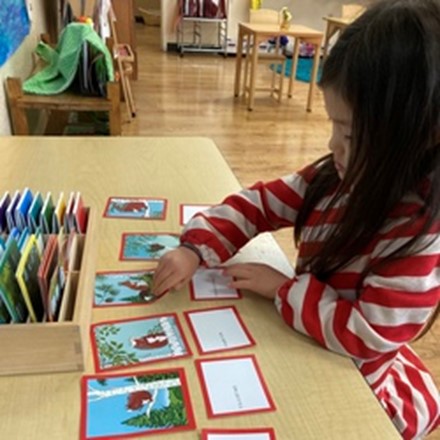
The Montessori environment is rich in language. Whether through conversation or language games, the young child is surrounded by vocabulary on their path to writing and reading in the Montessori classroom.
At the Montessori School of Silicon Valley, we use a phonetic approach to writing and reading. Phonics is a method of teaching reading and writing by developing the ability to hear and identify sounds of the English language.
Dr. Maria Montessori believed that writing comes before reading. Her position was that writing is the thought of the children while reading is a skill to interpret the thoughts of others.
While “babbling” signifies development towards oral language, scribbling can be looked at as the first steps to writing.
Beginning around age 3.5 Montessori children are introduced to a few letters at a time, until they have mastered a good portion of the alphabet. In a Montessori classroom children learn the sounds of the alphabet with the sandpaper letters.
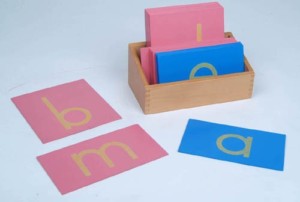
Using the sandpaper letter, they trace the sound as it would be written. They simultaneously see, feel and hear the sound being pronounced. This approach focuses on helping the Montessori child learn through touch – not memorization – and in the process the shape of the letter becomes part of their muscular memory as Montessori children.
Dr. Montessori found that children were capable of encoding words months before they developed the hand eye coordination needed to control a pencil. Words are built using the movable alphabet using objects or pictures representing cat, bug, mat, etc.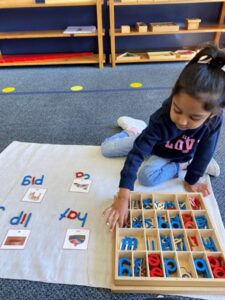
The child will sound out the letter and begin to build the words. They will naturally write larger words that don’t have a phonetic spelling as they increase their work and interest in this area.
Children then begin to compose words with the Movable Alphabet, building words one letter at a time. This process enables children to increase the level of difficulty and correct themselves. Children learn not to be afraid of making mistakes which are a natural step in the learning process.
The teachers facilitate, coach, and assist the child to self-correct. Being able to correct your own mistakes, is far more rewarding meaningful and leads to a confident, independent and self-assured person.
During the time children compose words with the movable alphabet they are practicing concentration and body control with the Practical Life and Sensorial Montessori materials.
Letters are being written in sand, with chalk and even water against chalkboards. These materials allow for practice without the frustration of writing on paper with an eraser.
They are then introduced to the Metal Insets which offers practice in pencil control, lightness of touch, as well as design qualities.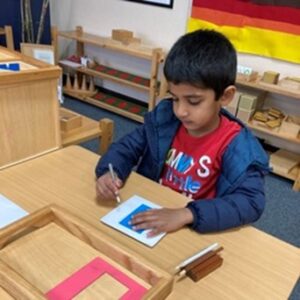
It is these three Montessori materials; Sandpaper Letters, Movable Alphabet, and the Metal Insets, which are the core of the handwriting and word building curriculum for the three- and four-year-old child. 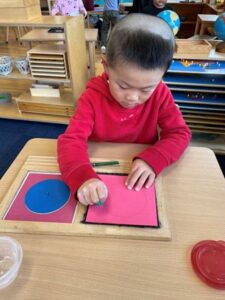
Reading skills normally develop so smoothly in Montessori classrooms that children tend to ‘explode’ into reading. They typically begin to read their own writing, then their own thoughts, and eventually they progress to sounding out the words of others.
Material is available to the children that focuses on phonetic skills. Cards are organized to teach skills from short vowel to long vowel patterns, and more difficult work. Montessori teachers are trained to teach the young children parts of speech in very meaningful and interactive ways.
One favorite Montessori ‘job’ in the class is the reading of action words (verbs). Children can read and perform actions like, jump, eat, dust, and mop. Soon enough they are diagramming sentences and understanding the ‘job’ of each word in a sentence.
The children will naturally expand these new skills to interpret the world around them.